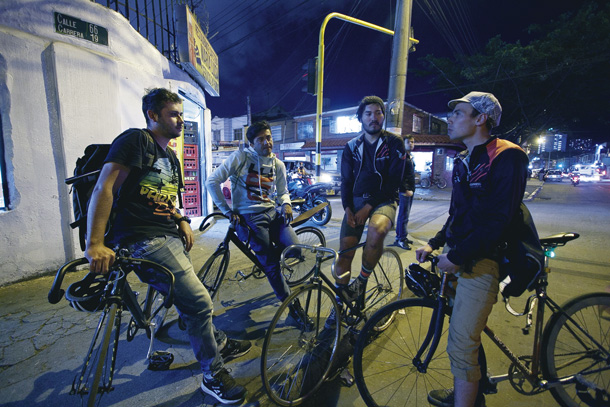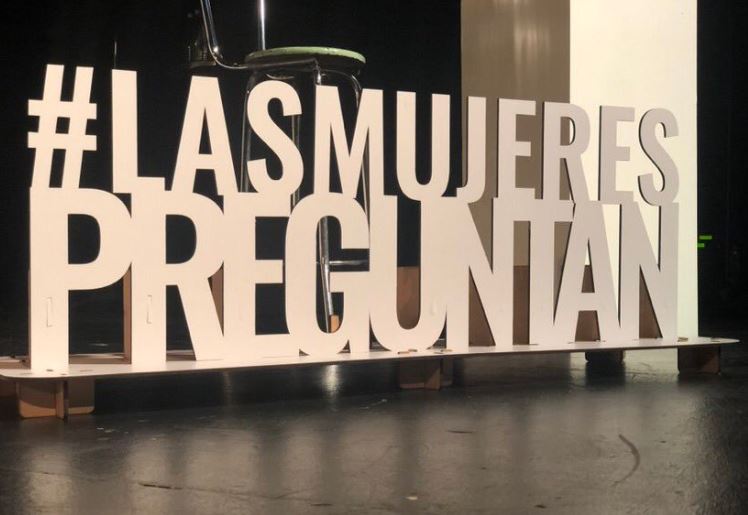
Photo: Wikimedia Commons
You may not be heading to the polls, but that doesn’t mean you can’t talk about what’s going on. Here are a few pointers on election language to keep the conversation rolling on the hot topic of the day.
While non-citizens are not able to vote in the upcoming Colombian elections, any topic that gets people talking is a great chance to practice your Spanish – just beware of sparking the political kindling (avivar el fuego político); we Colombians are certainly passionate about the candidate we support. Whatever political party (partido político) you support, left wing (izquierda) or right wing (derecha), centre (centro), centre-right/left (centro-derecha o centro izquierda), transversalism (transversalismo – bet you didn’t know that one), why not ask people what they think of the campaigns (campañas), or which candidate (candidato) they are supporting; some will be happy to tell you, others will be happier to draw an argument card from their sleeve to try and convince you. It doesn’t matter whether you agree or not, but you’ll learn more about the country and improve your language at the same time.
A simple question such as “¿por quién piensas votar?” (Who do you think you will vote for?) might start the discussion. Avoid asking directly “¿por quién vas a votar?” (Who are you voting for?), as some people believe in keeping their vote secret. Play safely with people you’re barely acquainted with: “¿Cómo ve las elecciones del 27, veci?” (What’s your take on the elections on the 27th, veci? [short for neighbour]); you’re not asking about their individual vote, but showing interest in your neighbour’s opinion.
Also, many fellow countrymen and women (compatriotas – a word which will certainly be used by the new president in the inauguration speech (discurso de posesión) in August) do not really care about who the new president is, according to a recent study by the Centro Estratégico Latinoamericano de Geopolítica (Celag). We drew a few expressions abstentionist Colombians might provide from a report on this study:
“Me desconecté de la política porque me estresaba.” (I unplugged myself from politics as it stressed me out.)
“Nunca voto por ninguno de ellos. ¿Para qué si siempre quedan los mismos?” (I never vote for any of them. Why vote if it is always the same ones who win.)
In the same vein, “Uno no sale a votar porque ya uno sabe…” (There’s no point going out to vote because you already know [what the result will be]…)
“Yo voto en blanco.” (I vote blank. See page 11)
Asking politely for their reasons is OK, but don’t push it if people are not willing to talk politics.
What to take into account on voting day?
Many of the words explained in this article will be used to report minute-by-minute updates (boletines), so you will definitely have learned … and possibly loathed election-related vocabulary by the evening of the 27th. Before voting, voters need to have had their ID document (cédula) registered (inscrito); then, they should check their polling station (puesto de votación).
Contraseñas are not a valid document to vote. Contraseñas are a temporary document given to those who have turned 18 (the legal age to vote in Colombia) while their cédula is being issued. Contraseñas are also issued temporarily if your cédula has been stolen, or lost.
On voting day, the ballot (tarjetón) will show 10 grids: eight for candidates and their corresponding running vice presidential mate (fórmula vicepresidencial) and two more for the blank vote. Our tarjetón this year offers two options for citizens to express their discontent with the presidential candidates available: a regular blank vote/protest vote (voto en blanco), and the promotores voto en blanco vote.
So, whatever the voters’ decision on the day, we certainly hope that ‘Ellos/Ellas no boten (throw away) su voto (vote).’
Voting day vocab
Cédula = Colombian ID document
Certificado electoral = a card that proves you have voted; it gives a number of benefits: half-day compensatory leave, discount in fee payment for college/university, discount for reissues of cédulas, reduction in military service time, preference if a tie presents when applying to a higher education programme.
Cubículo de votación = booth/stall
Conteo de votos = voting tally
Jurados = electoral jurors
Mesas de votación = polling tables
Puesto de votación = polling station
Urna = ballot box
Don’t be fooled!
The media will use a number of synonyms when they ‘speak elections’:
Ways to say the same thing
Candidatos – Contendores
Conteo de votos – Escrutinio
Votación – Elección – Sufragio – Comicios
Votante – Elector – Electorado (pl. the group of voters)
More vocab in the media
Abstención = abstention
Avance informativo = news bulletin
Coalición = coalition
Democracia = democracy
Ganador = winner
Jornada electoral = voting day – a.k.a. La fiesta de la democracia (Democracy party)
Partido = political party
Perdedor = loser
Primera vuelta = first round of voting / segunda vuelta = second round of voting
Voto en blanco = blank vote/protest vote
Voto nulo = spoiled vote
Voto válido = valid vote
Fun note on “polls”…
While the word “poll” is dynamic in English, and takes different meanings according to context, Spanish will have a single equivalent word for each of these instances:
One Gallup poll at the time said more people knew about the trial than knew the full name of the president.
Una encuesta (survey) de Gallup en ese momento mostró que la gente sabía más del juicio que el nombre completo del presidente.
If you really want to make more people go to the polls on election day, put someone on the ballot a lot of people hate.
Si quiere hacer que más personas vayan a las urnas (ballot box) el día de las votaciones, ponga en el tarjetón a un candidato que la gente odie.
This win was ratified at the polls on June 17.
Esta victoria se ratificó en las votaciones (elections) del 17 de junio.




